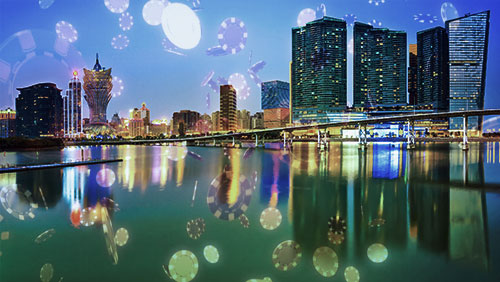From Asia’s premiere gaming hub to a world-class, cultural tourist destination.
 The Macau government is rebranding Asia’s gaming capital to become the “world center for tourism and leisure” as it paints a rosy picture for Macau’s non-gaming sector on the backdrop of faltering casino revenues.
The Macau government is rebranding Asia’s gaming capital to become the “world center for tourism and leisure” as it paints a rosy picture for Macau’s non-gaming sector on the backdrop of faltering casino revenues.
Saying that casinos are exerting “too much influence” on the city’s tourism branding, the Macao Government Tourism Office now aims to make Macau “a world class tourism city that is livable, convenient, fun, enjoyable, a city with opportunities” – one that will rival other popular city destinations around the world such as Paris, Singapore, London, and Hongkong.
In 2014, Macau ranked sixth out of the top 100 cities worldwide, with an estimated annual visitor arrivals of over 30.7 million.
MGTO Director Maria Helena de Senna Fernandes told Macau Business Daily during the launch of the consultation paper entitled “Macao Tourism Industry Development Master Plan” that the government aims to increase tourist visitation, expand the waterfront area, increase the number of budget hotels, push non-gaming revenue to MOP112 billion ($14 billion) by 2025.
“The first stage of this plan has been completed and we now have a general draft, which will be available for public consultation for two months. We hope to hear the opinions and use the feedback for the implementation of the future plan,” Fernandes said.
For Macau to achieve the vision of World Centre of Tourism and Leisure, the 52-page, consultation paper has identified four overall goals: manage sustainable future growth of tourism industry; diversify tourism products; attract high value visitor market; and improve tourism quality.
Each of the four goals is supported by different strategies and measures with a timeline to guide the pathway to success. The timeline of 0-5 years is considered as short term measures, 5-10 years as medium term, while time spans above 10 years is considered as long term measures.
“Gaming has exerted too much influence on the tourism branding of Macau. Promotions related to non-gaming tourism products should be strengthened in the future,” the document stated.
“Macau has the potential to exhibit an impressive image by reconciling its resort facilities, MICE [meetings and conventions], arts and festival events all into one integrated brand,” it added.
Achieving these goals, however, will not be as easy as it look on paper. The study raised several challenges that may derail the overall goals of Macau, such as limited affordable hotels for international visitors to stay; city interconnectivity problems; and Wi-Fi connection woes.
The low amount of quality resources and reliance upon non-resident workers is also considered worrying, with Macau needing to provide “quality services” in areas such as “immigration, sightseeing, retail, hospitality, transportation, and dining.”
Should these goals be implemented, the Macau government expects that the total visitor arrivals will be in between 33 to 35 million yearly, with a one percent to two percent visitor growth per year in a low growth scenario; while in a modest visitor growth scenario it is estimated total visitors could reach between 38 to 40 million, with three to five per cent yearly growth.